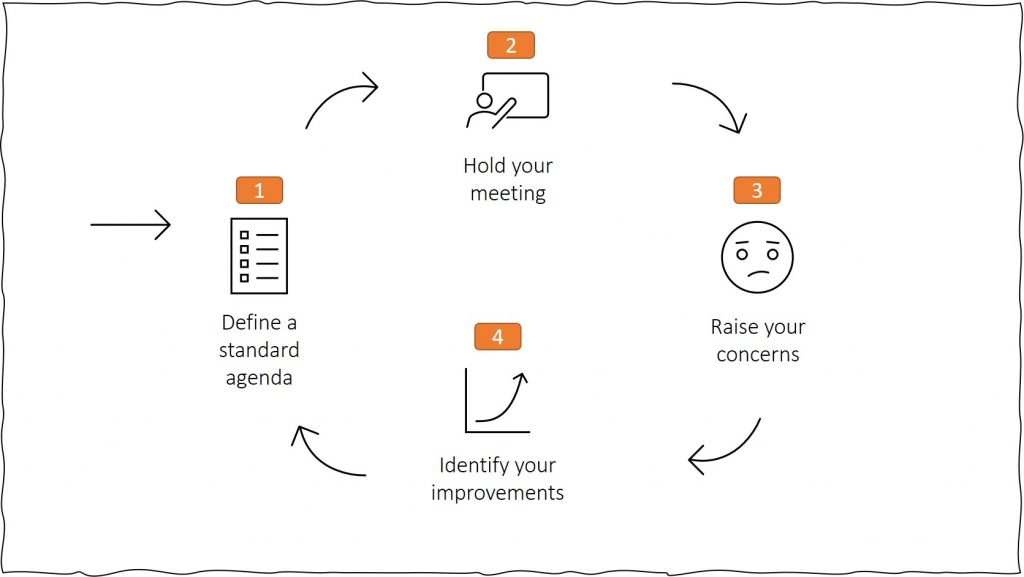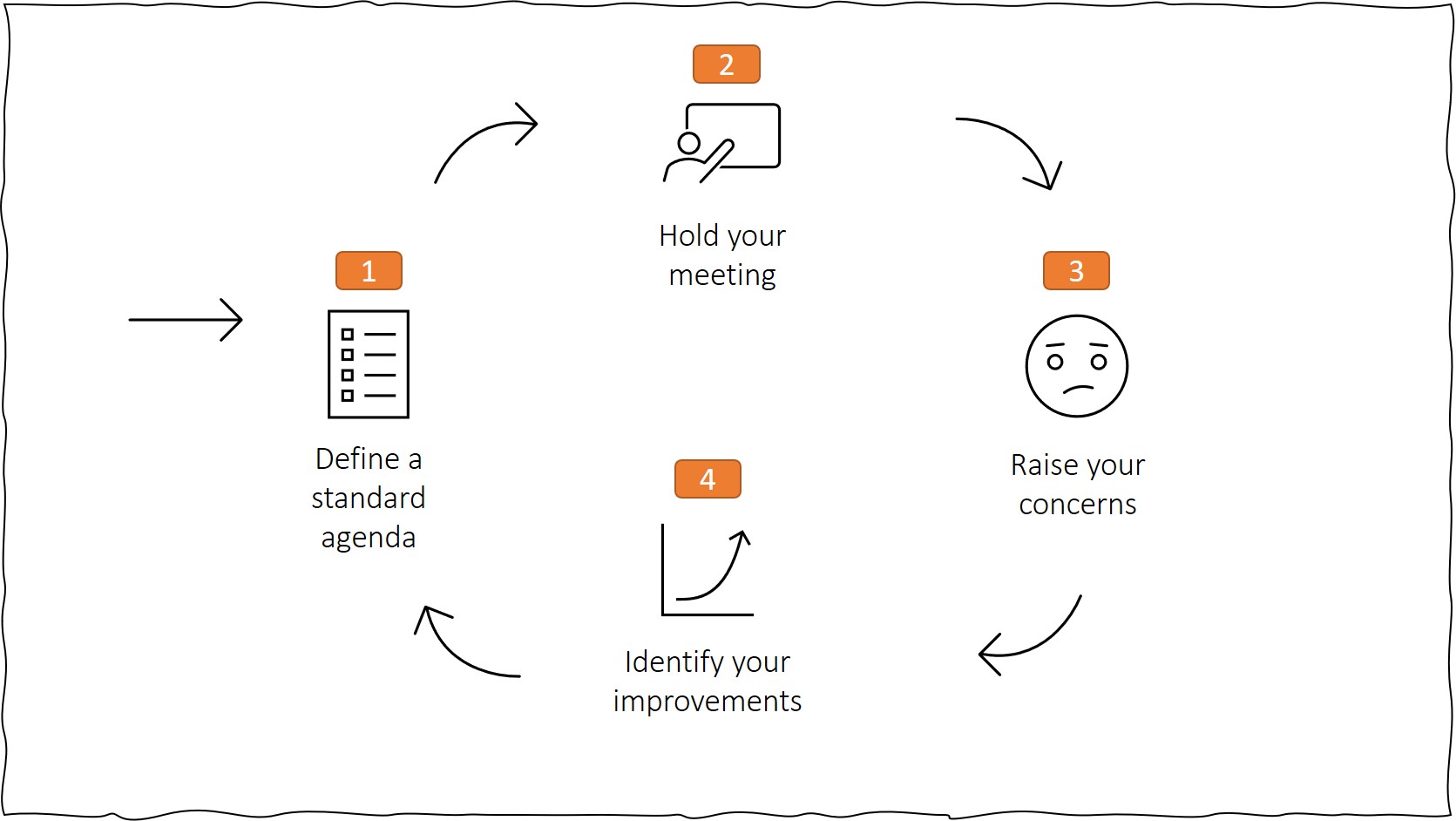Effective meeting agendas are a vital management tool…
When running a business process, standard meetings are a vital tool to use. But, what makes up an effective meeting agenda?
Agenda points that:
- Guide the participants towards decision making.
- Are clearly linked to the purpose of the meeting.
- Can be prepared for in advance.
- Help maintain existing processes.
- Steer continuous improvement of the organisation.
Standard meetings can bring numerous benefits including improved levels of efficiency and effectiveness. This brings me to the trigger for writing this article…
The last few months have been a challenge…
This is pretty much an understatement! Old habits have been broken in many cases and new ones are developing. From discussions I have had with businesses over the last few weeks this is certainly the case. It is understandable too, when trying to deal with a pandemic whilst trying keep a business going and re-organise it at the same time.
By getting business back into a ‘normal’ groove this provides the opportunity to create new (or revise existing) standard meetings. Whether this is trying to bring previous management oversights under control, or to re-establish what was in place prior to Covid-19 rearing its head, a periodic review is never a bad thing.
Something I hear, however, has tried to throw a few of my clients off the ‘straight and narrow’…
A common complaint
“These meetings take too long!”
Re-booting, or initiating, standard meetings had been a bone of contention to a number of managers I have spoken to recently. It is fairly normal to experience this at the outset. However, practice allows us to get the hang of the preparation and expectations of the standard meetings and this improved effectiveness often leads directly into improved efficiency.
In short, with practice meetings get better and shorter!
My response to these grumblings?
“When you stop being rubbish at managing your processes, your meetings will get shorter too.”
Yes, this often stops the conversations in their tracks! The reality is that the meetings are taking so long because there are too many items out of control. If they were in control you could move to exception reporting and really drive down the time it takes to have the meeting.
Kaizen and the effective meeting agenda
So, this brings us to the Kaizen opportunity for improving meetings.

How it works:
- Draw up your first standard meeting agenda, keeping the items in line with the purpose of the meeting.
- Conduct the meeting, following your agenda.
- Post-meeting, review what went well and what didn’t go so well and draw up a list of your concerns:
- What took too long?
- What didn’t lead you to a conclusion?
- What preparation was inadequate?
- What was irrelevant?
- What haven’t we got a grip of?
- Convert your concerns into improvements and update both your meeting agenda and to do list accordingly.
This is the basic process for improvement, following the PDCA (Plan – Do – Check – Act) cycle.
- Plan – your standard agenda.
- Do – holding the meeting.
- Check – raising concerns about the content and style of the meeting.
- Act – making improvements to the standard agenda.
Properly using an effective meeting agenda
The acid test for your meeting agenda is whether the conclusion of the meeting was both efficient and effective. If you can’t answer ‘yes’ to both of these considerations then there is still work to be done using the cycle proposed above.
Your reality may be different to your plan and that is OK. Having an expectation for your business meetings (level of participation, duration, types of decisions made) is healthy. In fact, defining these expectations helps you accelerate the process of improvement because you have a clearer target to hit.
Kaizen is a great strategy to improve all aspect of your business, including your standard meetings. Creating an effective meeting agenda really can lead to performance improvements and better control of your business functions.
If you aren’t sure how to get started let me recommend that you start small, gain control and then widen the scope of the meeting. In short, follow the cycle outlined above and use your experience to shape the next steps.
If your meetings are taking longer than you would hope for then try the improvement cycle proposed above.
Good luck with your next standard meeting.
